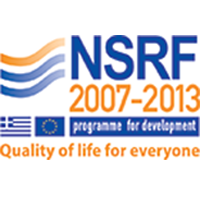Aerosol particles can cause detrimental environmental effects, exert direct effects on climate and visibility from scattering and adsorption and indirectly influence climate by cloud property modification, additionally they have adverse effects on human health, especially the fine ones (PM2.5) to the cardiopulmonary system, since they can penetrate and deposit deeply within the lungs.
On the other hand, particle-bound POPs (and specifically man-made or naturally/man-made originated PCBs, OCPs and PAHs respectively) are widespread over the surface, are becoming ubiquitous and are of concern caused of their toxic effects in human health.
Also, mineral dust is an important aerosol component and a considerable amount of bacterial species (as well as them linked to diseases associated with the human pulmonary system) are found to be present to aerosols. In addition, satellite data shows that large quantities of African Dust (AD) are transported over long distances due to meteorological conditions.
CHEMISAND study will investigate the direct and indirect effects of African Dust (AD) transportation, both on the environment and the potential human heath risk in the downwind study areas.

Data Animation Frame obtained by the SKIRON Model site [forecast.uoa.gr/dustindx.php?domain=atl], under the license of the Atmospheric Modeling and Weather Forecasting Group [AM&WFG], School of Physics, National & Kapodistrian University of Athens
The Key Objectives are:
 To establish an integrated sampling network, and deploy advanced sampling techniques, in selected sites in Eastern Mediterranean (North and South Island of Crete) in order to seize the transported African dust in to the Mediterranean Basin. The main study area (Island of Crete) is subject to frequent and severe Saharan dust events
To establish an integrated sampling network, and deploy advanced sampling techniques, in selected sites in Eastern Mediterranean (North and South Island of Crete) in order to seize the transported African dust in to the Mediterranean Basin. The main study area (Island of Crete) is subject to frequent and severe Saharan dust events To use the satellite images, data and backward trajectory models (HYSPLIT) to determine the source areas and the routes of African dust to the downwind areas
To use the satellite images, data and backward trajectory models (HYSPLIT) to determine the source areas and the routes of African dust to the downwind areas To measure the physical aerosol characteristics, and especial the particle size distribution, of the atmosphere in the downwind areas during African dust events, storms and non-events periods, in order to evaluate the impact of African dust to respirable particles in the downwind area during the event
To measure the physical aerosol characteristics, and especial the particle size distribution, of the atmosphere in the downwind areas during African dust events, storms and non-events periods, in order to evaluate the impact of African dust to respirable particles in the downwind area during the event To perform advanced geochemical analysis (ICP-Mass Spectrometry) of source and downwind areas soils and aerosols in order to accurately determine the origin of the dust burden arriving in the downwind and exclude any possibility of a wrong record of microorganisms and contaminants picked-up during transit of air mass
To perform advanced geochemical analysis (ICP-Mass Spectrometry) of source and downwind areas soils and aerosols in order to accurately determine the origin of the dust burden arriving in the downwind and exclude any possibility of a wrong record of microorganisms and contaminants picked-up during transit of air mass To use advanced analytical chemical techniques (ICP-Mass Spectrometry and GC and LC/Tandem Mass Spectrometry) in order to record the hazardous chemicals content of African dust and to correlate it with the transportable and respirable particle size of the dust
To use advanced analytical chemical techniques (ICP-Mass Spectrometry and GC and LC/Tandem Mass Spectrometry) in order to record the hazardous chemicals content of African dust and to correlate it with the transportable and respirable particle size of the dust To use state-of-the-art high density DNA microarrays in combination with conventional non-culture-based molecular techniques in order to build for atmospheric environment during African dust events, storms and non-events periods a database of the prokaryotic taxa present event at very low biomass densities. These results will allow correlating the microbial communities with the transportable and respirable particle size of dust
To use state-of-the-art high density DNA microarrays in combination with conventional non-culture-based molecular techniques in order to build for atmospheric environment during African dust events, storms and non-events periods a database of the prokaryotic taxa present event at very low biomass densities. These results will allow correlating the microbial communities with the transportable and respirable particle size of dust




